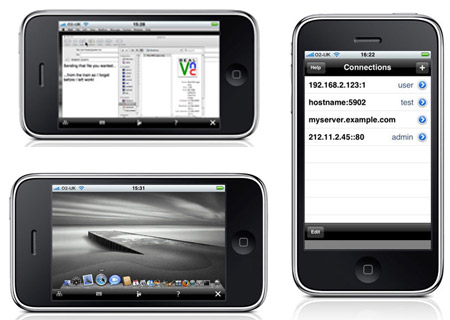

- Vnc viewer for mac m1 how to#
- Vnc viewer for mac m1 mac os x#
- Vnc viewer for mac m1 full#
- Vnc viewer for mac m1 Pc#
You could read the linked blog on how to do this, but the picture below alone should tell you what to do, what Apple display adapter you need, and what resistor to buy based on its color codes. Again, I am not a fan of this DIY hack because it's not clean and if you don't have the mDP to VGA adapter or the resistor you will have to purchase them anyway and you might only save a couple of bucks over the commercial product. I included this option both for reference to see what is being done here (how easy it is) and to provide another option if you are in a pinch. You can make your own but to me, this is not safe and very sloppy for a permanent installation. What it does is make OS X think a monitor is still plugged into the display so whatever settings you have configured for that "monitor" will be sent to the VNC viewer. It's clean, it's easy, and it works out the box. The easiest thing I have seen that solves this problem is getting a Dummy Display Emulator. If you leave the monitor attached, VNC will work with no problems across reboots Trick OS X into Thinking a Display is Still Attached This is why you have to hook up a monitor to get screen sharing to work again. This is why I am not a fan of VNC or ARD and will only use it if I absolutely have to (95% of everything I do on headless systems is in Terminal, so this doesn't come up very often for me) If nothing is connected, no parameters are sent and thus the viewer has no idea what to display. The way it works is that it queries the display server to get the settings so VNC can send those settings to the viewer. VNC is tricky to use on a headless system.
Vnc viewer for mac m1 mac os x#
One client I like on iOS and Mac OS X is Of course Apple's free Screen Sharing app (look for it in /System/Library/CoreServices/Applications ) and Apple Remote Desktop work well, too.

For troubleshooting, you could assign a static IP address so that you're sure it's not a DHCP issue. You might need to watch for DHCP traffic and see if the Mac is rejoining the network and asking for an address from the router if you can't find the machine on reboot. To restart and skip FileVault one time, use: fdesetup authrestart
Vnc viewer for mac m1 full#
Now, you do need to get past any FileVault pre-login screen where the full actual OS isn't running yet. The service starts up automatically when incoming network traffic on the VNC ports is detected by the OS. Under the Sharing preference pane you need to enable either the Screen Sharing or the Remote Management and then use the Computer Settings dialog to enable VNC. The first thing to do after downloading the app to your iOS device will be to sign in to your RealVNC account.Apple supports this out of the box.

You can do so straight from the App Store the VNC Viewer iPhone download is free. The first thing you’ll need to do, before getting started, will be to download the VNC Viewer iOS app. If you want to be like Martin and save precious time, VNC Viewer for iOS is the way to go. By the time he’s in the office, his colleagues already have the new version of the presentation. Therefore, he can make the change before his business partner arrives for their lunch. Luckily, Martin has the VNC Viewer app installed on his iPhone. However, this morning he has an even better idea, but he’s away on a business trip, between two meetings. That way, if he has an idea that he needs to add to his presentation after he’s home, he won’t lose it.
Vnc viewer for mac m1 Pc#
Martin sometimes uses VNC Viewer on his home PC to access his work machine, running VNC Server. Of course, there are many other useful VNC Connect features, which you can take a look at here. Here’s how to set up VNC Connect for your iPhone or iPad, so your PC is just a tap away. The VNC Viewer iOS app couldn’t be easier to set up and it will help you access your devices in a quick and easy way.


 0 kommentar(er)
0 kommentar(er)
